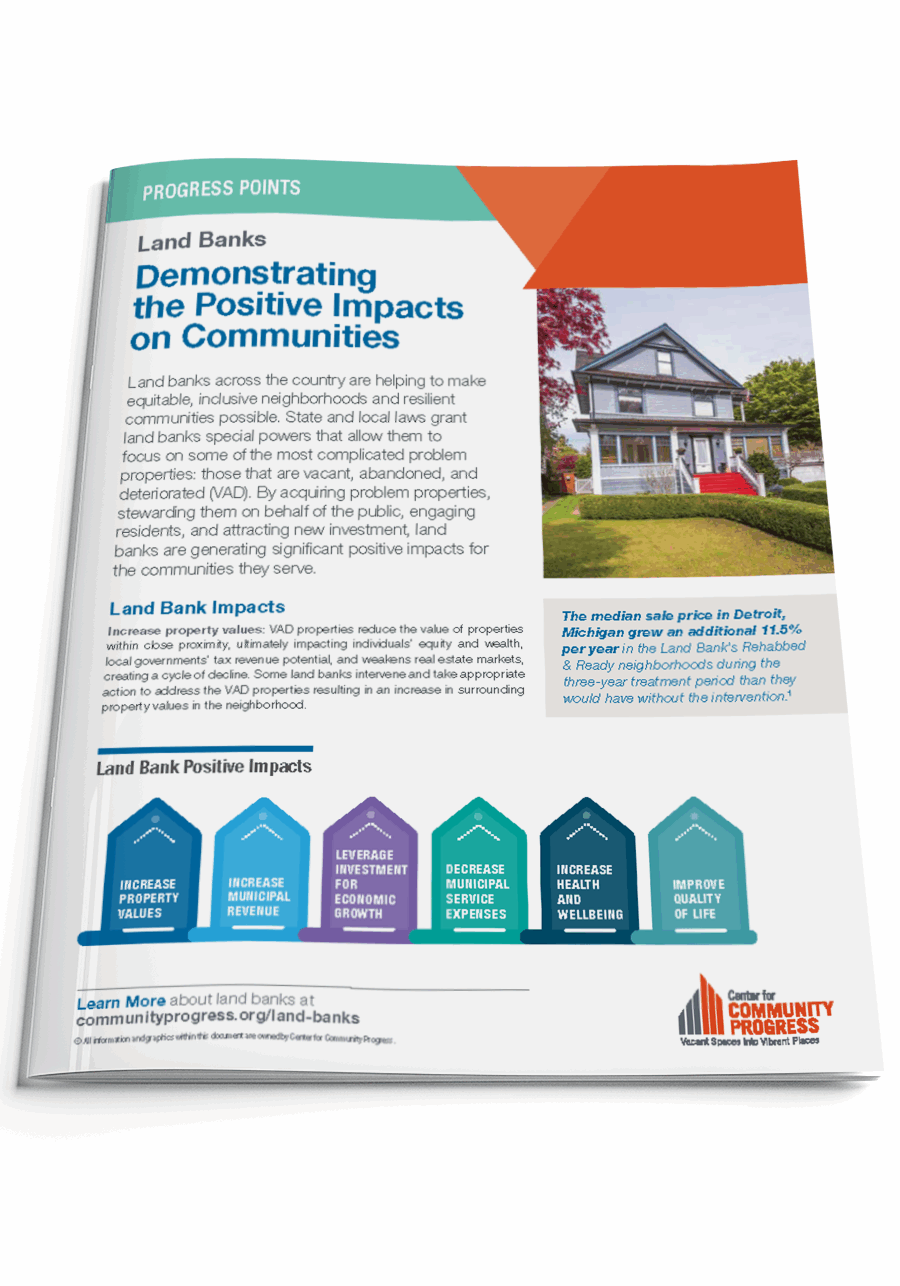Progress Points: Demonstrating the Positive Impacts of Land Banks
A Brief Primer
Topic(s): Land Banks
Published: January 2022
Geography: United States
Author(s): Center for Community Progress
Land banks across the country are helping to make equitable, inclusive neighborhoods and resilient communities possible. State and local laws grant land banks special powers that allow them to focus on some of the most complicated problem properties: those that are vacant, abandoned, and deteriorated. By acquiring these harmful properties, stewarding them on behalf of the public, engaging residents, and attracting new investment, land banks are generating significant positive impacts for the communities they serve.
Land Bank Impacts
Stabilize property values: Vacant, abandoned, and deteriorated properties lower nearby property values, ultimately hurting individuals’ equity and wealth, real estate markets, and overall municipal revenue. Land banks can intervene to address these problem properties to interrupt decline and stabilize neighborhood property values.
Increase municipal revenue: Problem properties are often delinquent on taxes, which reduces municipal revenue that funds critical public services like schools and roads. Land bank interventions break the cycle of foreclosure so properties can get back on the tax rolls.
Leverage investment for economic growth: With the support of public, philanthropic, and private dollars, land banks can transform properties—from single-family home rehabs to large sites—and offset costs so the property can still meet the established community goals. These projects fuel more economic growth and investment in the neighborhood.
Decrease municipal service expenses: Vacant and abandoned properties drain city services, e.g., through code enforcement, fire, and police calls. By taking care of and eventually transferring a property to a new owner, land banks help reduce municipal service costs.
Improve health and wellbeing: Addressing problem properties can help reduce crime and improve personal and public health.
Improve quality of life: When a land bank puts a problem property back to use, it increases civic engagement, improves the perception of a neighborhood, and makes residents feel proud of where they live and more optimistic about where their neighborhood is going.
Further racial equity and social justice: Land banks can help build wealth in historically disinvested neighborhoods. Increasingly, land banks across the country are shaping contracting and purchasing policies to support minority- and women-owned businesses, uplifting cultural heritage through creative placemaking, working with organizations that focus on previously redlined neighborhoods, and committing resources to address the homeownership rate gap in communities of color.
Promote lasting affordability: Many land banks are looking for ways to use vacant and abandoned properties to address housing affordability. Some land banks are partnering with community land trusts while others apply deed restrictions to create permanent affordable housing.
Support climate resiliency: Extreme weather events are becoming more common and intense due to climate change. Some land banks are looking for ways to help with disaster recovery and climate resilience, for example, by creating more green space to reduce heat and stormwater runoff, and by addressing storm-damaged properties.

Topic(s): Land Banks
Published: January 2022
Geography: United States
Related Publications
Other Related Content
Subscribe to join 14,000 community development leaders getting the latest resources from top experts on vacant property revitalization.
